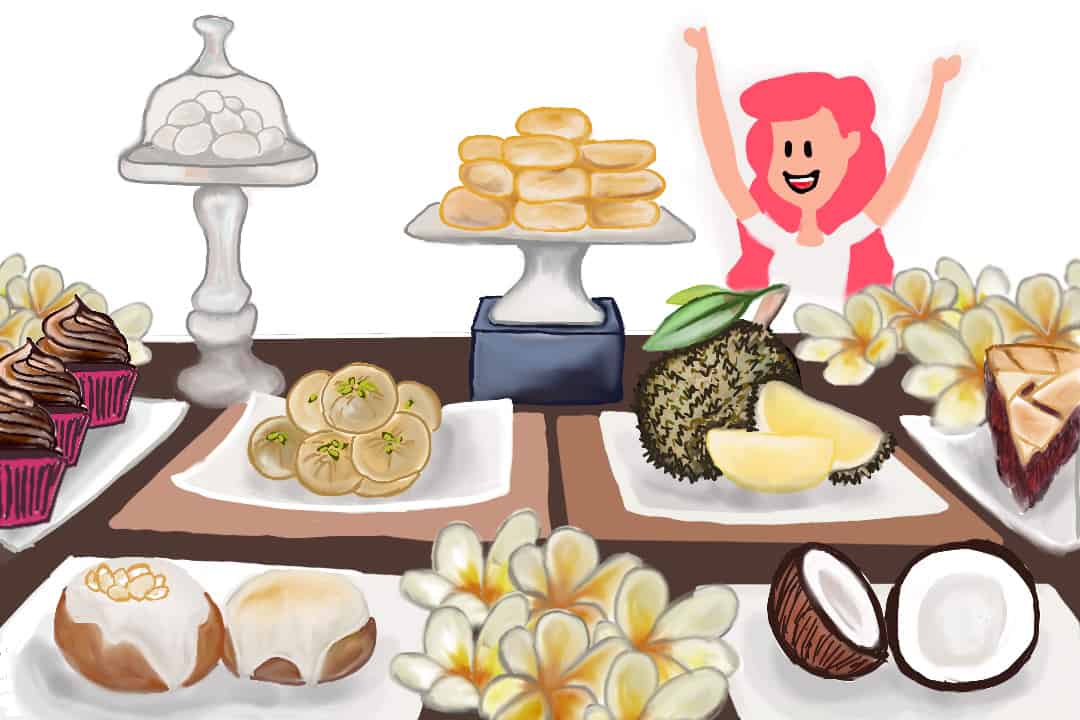Food has always been a comfort in my life. I grew up exploring different cuisines while living in five countries — India, Singapore, the UAE, Bahrain, and Canada. As a teenager, partaking in culturally authentic meals allowed me to adjust to my periodically changing lifestyle.
Growing up in India, I impatiently waited for rainy days so I could savour the mouth-watering scent of freshly prepared nankhatai — shortbread butter cookies — wafting from my grandma’s kitchen. Singapore’s rich flavours and blistering tropical heat brought with it the scent of coconuts, frangipani, and durian fruits. There was affordable food, thanks to hawker centres — communal centres packed with local food vendors — where each meal captured Singapore’s diverse cultural heritage.
Since moving to Canada, I’ve had the opportunity to revisit cultural childhood foods due to the city’s diverse immigrant communities. I’ve even become more comfortable cooking and experimenting with unfamiliar ingredients in my pantry.
U of T’s student body captures the diversity in cultural experiences that exist across Canada, with Toronto’s food scene boasting over 7,500 restaurants across 158 neighbourhoods. These restaurants represent diverse immigrant communities that have preserved their cuisines over the years, including Chinese, Vietnamese, Caribbean, Japanese, and Indian influences.
Comfort foods for the soul
For U of T students, university life and their packed schedules mean take-out containers and dirty dishes piling up in the sink weekly. Cooking can become tedious, and our cravings for home-cooked comfort food grow exponentially.
While some students try to cook to emulate their favourite foods, certain flavours and ingredients are hard to come by in Toronto. Despite various ethnic food stores and aisles, some key ingredients simply don’t get imported over to the country or are only infrequently available, making them expensive.
For Natasha Tweneboah, a fourth-year student double majoring in biology and psychology, West African food bridges the gap between her upbringing and ethnicity. Despite being born and raised in Toronto, authentic Ghanaian foods remained a central aspect of her childhood.
“I grew up with my Ghanaian culture because that’s where my parents immigrated from to come to Canada. So I’m most used to eating West African cultural food, like jollof rice and meat,” Tweneboah said in an interview with The Varsity.
Tweneboah further recalls some of her favourite meals, describing a rich, flavourful diet. Her favourite dishes include waakye, a popular Ghanaian dish made up of rice and beans, served with sides of spaghetti or avocado. Ghanaian feasts are rich with spices and include soups and stews such as light soup, groundnut soup, and cocoyam leaf soup usually served with fufu.
These authentic comfort foods are difficult to find in the GTA. For Tweneboah, specific eateries and catering services such as the African Chop Bar in North York provide an opportunity for her to share traditional Ghanaian food with her friends. Tweneboah values the act of sharing and cooking to cherish her cultural roots and her love for these foods.
“My mom taught me how to cook Ghanaian food and that’s my DNA — [it’s] what I eat, even when I’m going to school. When I bring lunch, it’s mostly African food. I’m able to cook it on my own and even make food for others,” said Tweneboah.
A shared experience
Similarly, as Shania Meira, a third-year biology specialist, shared in an interview, Toronto’s cultural centres, such as Chinatown, allow her to stay connected to her diverse roots through its authentic eateries.
Growing up in Canada and being of both Chinese and Portuguese descent, Meira describes herself as someone who “grew up eating almost everything.”
However, her comfort meal remains to be sweet and sour pork, which she only occasionally finds at special banquet dinners or ceremonies. Thus, finding authentic Chinese foods in the GTA has become a distinct aspect of her relationship with her mother and her culture.
“I don’t speak any type of Chinese, but my mom does, so she’ll always do the ordering,” Meira shared.
Comfort foods can strengthen family connections. The memories of sharing our favourite foods remain an integral aspect of childhood for bicultural students. For international students, having access to traditional cultural spaces through restaurants can be a source of comfort and support while adjusting to life in Canada.
In an interview with The Varsity, Kristen Lee Pack, a first-year U of T student, shared her childhood nostalgia for traditional Caribbean foods. In the Caribbean, rotis and doubles are a common street food consisting of two deep fried mini rotis, a rich chickpea mixture, and various tangy sauces — with flavours such as tamarind, lime, and mango.
“Every Friday when I was a kid, my dad would take us to get doubles. And it’s just a very core memory for me, standing on the road eating doubles at seven o’clock in the morning before school,” Pack detailed.
Pack values her mixed cultural roots as Chinese, Portuguese, Scottish, and African, but her connection to Caribbean culture is clear in her love for these foods. When asked to share her favourite spots in the GTA, she eagerly recommended Lila’s Roti Shop in Mississauga.
“It’s not extremely authentic but there’s a little bit of Caribbean essence in it,” she explained. “So it’s just very reminiscent to me.”
Something new
Toronto’s immigrant communities have created a multicultural combination of cuisines from one neighbourhood to another. For U of T students looking to reconnect with cultural comfort foods, there are options available across Toronto and the GTA.
More importantly, Toronto’s rich food options give students a chance to step out of their comfort zone and explore cultural meals they may be unfamiliar with. Our city’s diverse environment is a perfect playground for the curious and experimental foodie.
As Pack put it, exploring flavours is a must: “Don’t be afraid to add pepper!”


